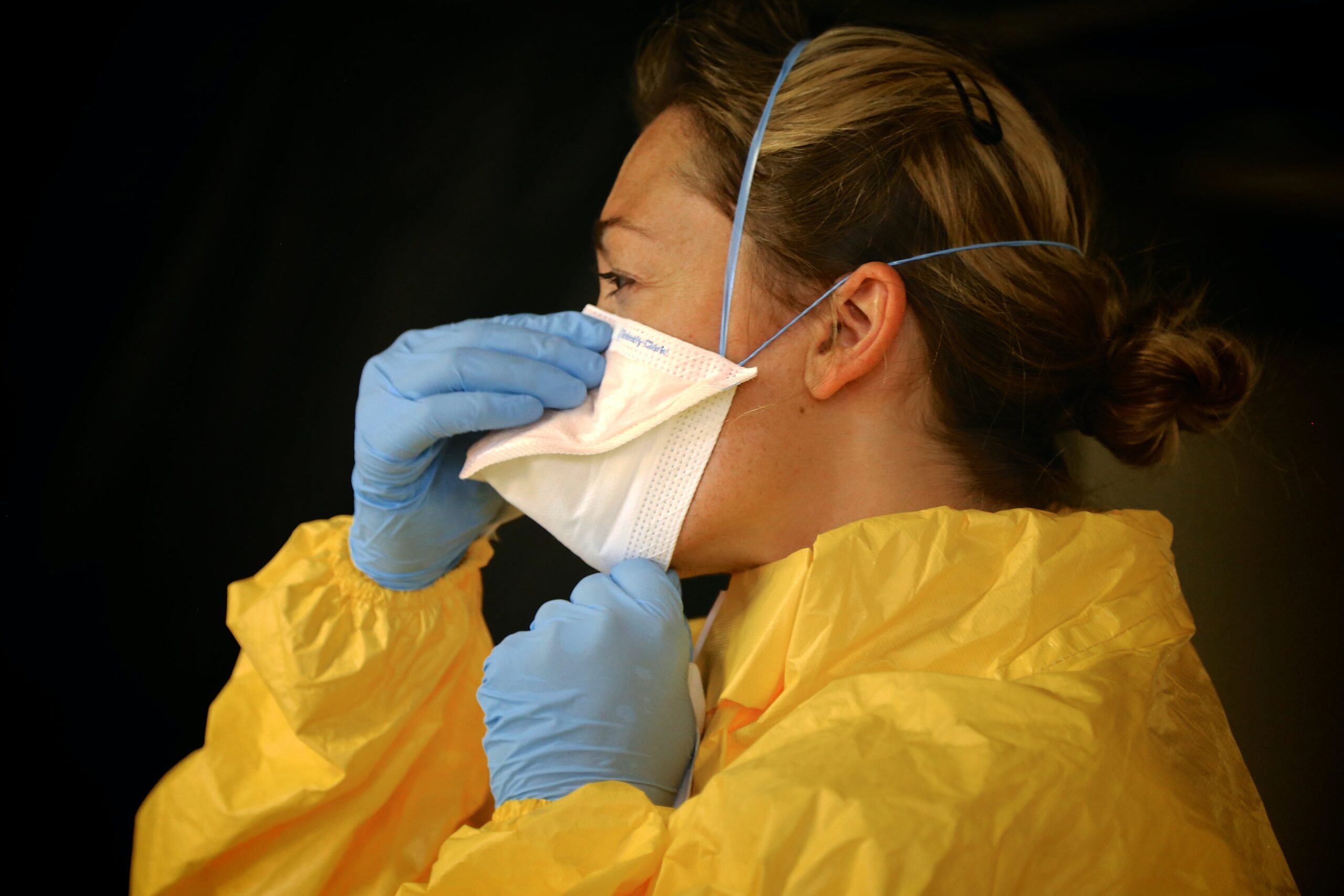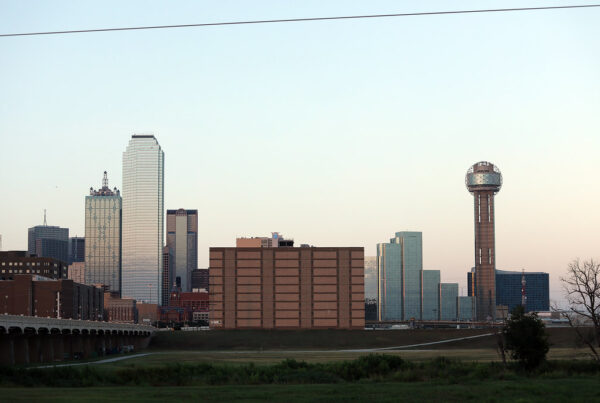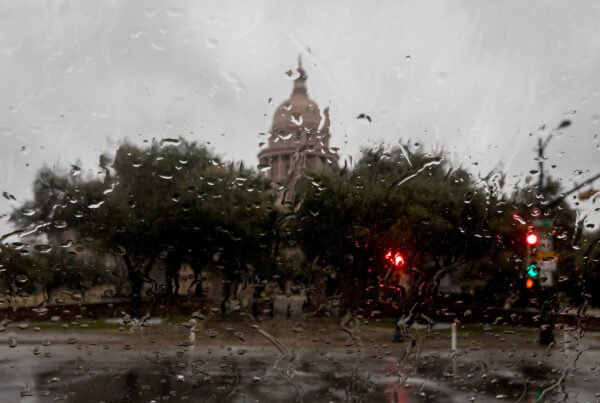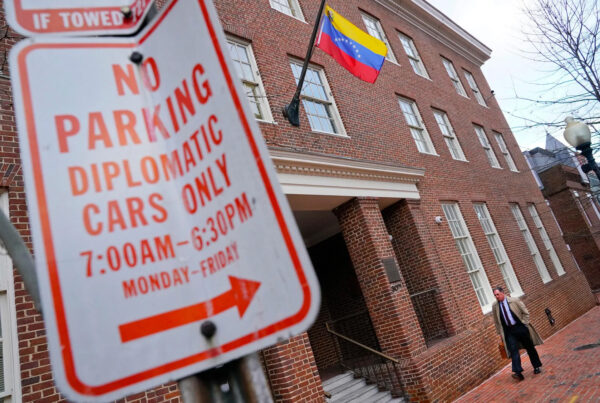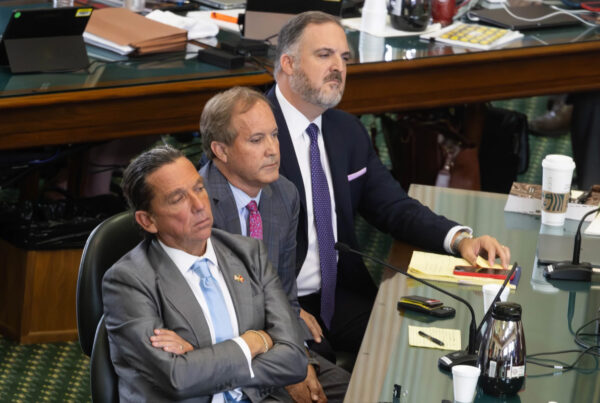For many it’s hard to believe that around four years ago, the first COVID-19 case was reported in the U.S. Who could imagine the years to come?
With hindsight being 20/20, a group of researchers from the George Washington University are looking to learn as much as possible. A new report they’ve just released looks at how COVID-19 affected frontline workers in the U.S. and what can be done so they are better protected in future.
Lead researcher David Michaels is a professor at the George Washington University Milken Institute School of Public Health and is a former administrator of Occupational Safety and Health Administration. He spoke with Texas Standard on who were disproportionately affected and what needs to be done to better protect frontline workers ahead of the next pandemic.
Listen to the interview above or read the transcript below.
This transcript has been edited lightly for clarity:
Texas Standard: The big takeaway here from this study appears to be that during the pandemic, the U.S. regulatory system – through different laws and procedures or lack thereof – failed to protect thousands of frontline workers and in the course of that, fail to prevent thousands of deaths. How did you reach that conclusion?
David Michaels: Well, you know, we reviewed the evidence that came out really since the beginning of the pandemic. And, of course, one of the problems we saw is there was so little focus on workers that we don’t have good statistics.
But it became pretty clear – there are a lot of studies that show that different groups of workers who couldn’t work at home – the ones who had to go into work every day in the food industry or in manufacturing or first responders, and of course, taking care of the sick and the elderly – they’re all at increased risk of dying. And so it seemed pretty clear that these cases which occurred at work could have been prevented, but weren’t.
Let’s get to the “could have been” in just a moment, because one of the vulnerabilities that these frontline workers had was, well, of course, they didn’t have the opportunity to work from home. Many of them were going in every day – day in and day out – coming into contact with people who had COVID. Could that have been different?
Yes. If the government had said at the very beginning of the pandemic… People are going to need to come to work because we have to make sure the economy functions and society runs, we have to take care of our sick and elderly… but we need to make sure these people are protected. We’ve got to give them more PPE (Personal Protective Equipment). We’ve got to make sure they have the ability to work safely.
There are a bunch of things that we could have done, but that the federal government, in particular during the Trump administration. said “well, we’re just not going to do those things. We’re not going to come down hard on employers, because we really want to make sure that the food system isn’t endangered,” for example. So we sacrificed workers lives.
I also want to focus on the disproportionate effect that this seemed to have on Black and Hispanic workers, right?
That’s right, because Black and Hispanic workers are disproportionately employed in some of the industries where we saw the highest impact in terms of illness and death. Certainly the meatpacking industry, where lots of Black and brown or lots of migrant/immigrant workers, or they’re in long term care facilities.
And, of course, these were people who didn’t have jobs where they could work at home. We often gave people who worked at home and who lost their jobs,higher financial subsidies than the wages that workers were getting working in nursing homes or a lot of the facilities where they got sick. It was a terrible situation.
So what is it going to take to protect worker health in the next pandemic? I think that the generally accepted assumption is that there will be another, but what can we do now?
That’s right. We have to prepare now. From the worker protection point of view, we need smarter and stronger regulation.
The Occupational Safety and Health Administration, the agency I ran for more than seven years, really needs to issue a standard requiring employers to protect workers from airborne diseases. OSHA has one for bloodborne pathogens like HIV and hepatitis. But we need something for viruses in the air.
We also need a rule to tell employers they have to start preparing for a pandemic long before it arrives.
And it’s not just regulation, of course. We need legislation requiring, and maybe for small employers supporting, adequate medical leave – adequate in terms of length of time and paid leave so sick workers can stay home and not spread the virus to their coworkers.
But you know, having worked in the government, that change sometimes moves rather slowly. And preparation, at least historically speaking, sometimes, falls behind. What challenges do you see, and how likely is it that any such change will be forthcoming?
You know, I think we have amnesia about what the beginning of this pandemic was like before the vaccination was accessible. It was a disaster, especially for workers, and we’ve forgotten that.
I think we have to go back and look at those news clips and remember how serious this was and say “we can’t afford to do this again.” We really have to remember that we need to be prepared for the next virus that comes that we’re not going to have vaccination for.
You know, a key way to do that, though, is to change what’s going on in the indoor environment – in workplaces, in schools, in nursing homes, any place where people spend many hours at a time. You know, when we turn on our faucet in our home, in our sink, we expect the water to be clean and not contain anything that’s going to make us sick. We ought to have the same expectation of the air we breathe.
And so we have to be talking about better and cleaner air flow, ventilation, change building codes across the country to make sure that when we’re in the building for long periods of time, they are safe. And that’s a national effort and a local effort. I think that can make a very big difference.
Professor, who should take the lead here? Because unless there is someone taking the lead, the ball gets dropped.
That’s right. And there is no federal agency that really has jurisdiction over all of these issues.
So the Occupational Safety and Health Administration, I think, should be given a greater lead. But, you know, this is an agency that Congress has always underfunded, and it really hasn’t been given the strength that it could have.
But, you know, I often ask a sort of thought experiment. I say to people, “can you imagine if we had a new lethal virus, but there was no Zoom and there was no telework.” And the highly paid, politically powerful executives in finance, high tech, all the attorneys… if they had to come into the office every day, we would have seen the national clamoring for stronger rules to protect workers at work. Instead, we mostly ignored what was going on in workplaces.
But I think we have to look at this and say, “what could we do to make sure everybody has the right to go into work and leave at the end of the day in the same health and the same safety that they arrived at working?” And I think we could make a big difference in making sure the next pandemic isn’t as terrible as this one.


